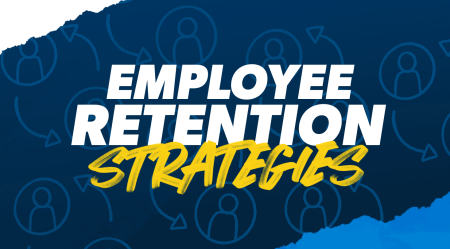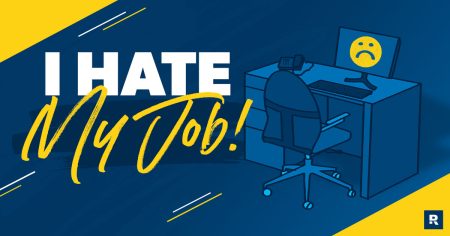Every small business owner looking for financing should understand the fundamental differences between a business line of credit and a term business loan.
Both types of financing can be useful, but they do serve slightly different business needs. Applying for the right type of capital at the right time ensures that you don’t run into any problems down the road—or create more problems down the road.
Here, we’ll look at term loans and lines of credit, the requirements, benefits, and drawbacks of each, to help you determine which is the right option for your small business.
What is a business term loan?
A term loan is a fixed funding transaction. It is a one-time loan based on the current cash flow of your business (often plus collateral that you pledge to secure the loan).
With a term loan, all of the proceeds are available at the time of closing. The lender bases your payments, interest, and principal on the amortized loan terms. For example, your business might take out a $100,000 loan at an 8% fixed interest rate over a 5-year term. Interest rates and monthly payments on term loans are generally fixed for the life of the loan.
If your term loan is secured (many are), the bank will assume an ownership position on the collateral you offer. This means you cannot transfer or liquidate the collateral you use to secure the term loan until you make the final loan payment.
The typical use for a term loan is to finance a major expenditure. However, it can also be used to cover daily cash flow expenses.
What is a business line of credit?
A business line of credit (LOC) is like a cross between a short-term business loan and a business credit card. When you open a business LOC, the lender approves you for a credit limit on the account. This credit limit represents the maximum amount of money your business can borrow at a given time.
As your business uses its credit limit, less money is available to borrow in the future. But your business can repay the money it borrows (plus interest) and regain access to the same credit line—as long as the business LOC remains in good standing.
As you borrow against the available credit limit, you accrue interest charges each month. You’ll only pay interest on the amount of money withdrawn.
A line of credit has the potential to be a great cash flow management tool. A study by Intuit found that 61% of small businesses face cash management challenges.
Smart uses for a line of credit include stocking up on discounted inventory, financing for marketing campaigns, covering temporary payroll needs, and more.
Making the choice: Term loan or line of credit?
To determine which option is better for your business,start by answering the following questions:
- Why does your business need financing? How do you plan on using the capital?
- What type of products or services do you offer (and what is the life of those goods)?
- Is your business able to satisfy stricter lender borrowing requirements (with regard to credit, revenue, and time in business) or do you need a more lenient approval process?
- Are your capital needs long-term or short-term?
- What is your standing as a borrower (i.e. credit score, time in business, revenue, etc.)?
Based on the answers to these questions, you can decide whether a loan or line of credit is more appropriate.
If you have great credit, along with sufficient revenue and time in business and you want to borrow money to expand your business, a business term loan would be a solid choice. However, if you have credit problems, your business is relatively new, or you need repeated access to a cash flow financing solution, a line of credit is likely better for you.
Differences between business lines of credit and term loans
A term loan can be an attractive financing solution due to its competitive interest rates and borrowing terms. That said, lender qualification criteria for a business term loan can be more challenging to satisfy compared to other types of financing for small businesses.
A business line of credit is a flexible funding resource that can be useful for many small businesses. Interest rates may be higher with LOCs compared to some term loans and other business financing options, but lender qualification standards are often more forgiving as a tradeoff.
The key differences generally lie in what costs are included, and how you’re required to repay your loans.
Lender requirements
Ideally, in either case, you’ll have a credit score above 700, annual revenue that exceeds $100,000 and have been in business for at least 2 years. Depending on the lender, however, these levels may vary. There are always options.
The recommended minimum requirements for each are generally as follows:
| Business term loan | Business line of credit | |
| Minimum Credit Score | 680 | 600 |
| Annual Revenue | $96,000 | $50,000 |
| Time In Business | 2 years | 6 months |
Repayment structure
Term loans offer many benefits to small businesses, including the fact that borrowers can often repay the funds they borrow over a longer period of time. Lenders typically require borrowers to make monthly (sometimes bi-weekly) payments with term loans. Longer repayment structures with less frequent payments can be friendly for investments in business growth that take time to provide returns.
Lines of credit allow business owners fast access to capital during a time of need.
As a tradeoff for speedy and flexible financing, business owners must often repay the money they borrow over a shorter period. In addition to expedited repayment terms, the payments themselves may also occur on a more frequent basis. Some lenders may require borrowers to make weekly payments toward the money they borrow from their LOC, though others may offer a less demanding payment structure.
Interest rates and fees
Term loans often feature lower interest rates than other types of business financing, including lines of credit. At the time of writing, you might find interest rates as low as ~6% with a business term loan, depending on your creditworthiness and other factors.
In addition to the interest rate a lender charges on your loan, it’s also important to factor in additional fees that could increase your overall costs. That might include origination fees, application fees, late fees, and prepayment penalties, as well as factoring fees and factor rates.
If you’re comparing term loans from multiple lenders to search for the best deal available, this free business term loan calculator from Lendio can help you crunch the numbers.
Lines of credit often feature higher interest rates compared to business term loans and other sources of financing. Interest rates commonly range between 8% and 24% on business LOCs.With lines of credit, many lenders also charge annual fees, origination fees, maintenance fees, late fees, and other expenses. So, read the fine print before you sign any financing agreement. You can also use this free line of credit calculator from Lendio to compare the cost of multiple business LOC options.
When should you apply for a business term loan?
If your business needs financing for any of the following reasons, a term loan is likely the better fit.
- Opening a new location – Expanding to a new business location requires a sizable upfront investment that might take time to produce a profit. A term loan can help you amortize the investment over several years.
- Hiring new employees – A term loan is a great way to handle the upfront costs associated with bringing on new staff and can provide a cash cushion for your business to manage increased payroll expenses.
- Renovations and capital improvements – A term loan can stretch out upfront renovation costs, enabling your business to continue to run without a sizable cash outlay.
When should you apply for a business line of credit?
The following situations are examples of when a business line of credit could be helpful to a business.
- Cash flow management – Many small businesses struggle to bridge the gap between accounts payable and accounts receivable. With a line of credit, a business can use this resource to pay its vendors and repay the funds it borrowed once its customers pay their invoices.
- Seasonal sales cycles – Businesses that have a busy season could use a line of credit to ensure a cash cushion during slower months.
- Inventory purchases – A business can draw on the line of credit to purchase inventory and pay it down when it sells the inventory at a later date.
The last thing to keep in mind– term loans and business lines of credit are not your only two options. Although these are two of the most popular and useful small business funding resources available, there are other types of small business loans you can consider if you feel like your business needs alternative financial resources.
The information in this blog is for informational purposes. It should not be used as legal, business, tax, or financial advice. The information contained in this page is Lendio’s opinion based on Lendio’s research, methodology, evaluation, and other factors. The information provided is accurate at the time of the initial publishing of the page (December 13, 2022). While Lendio strives to maintain this information to ensure that it is up to date, this information may be different than what you see in other contexts, including when visiting the financial information, a different service provider, or a specific product’s site. All information provided in this page is presented to you without warranty. When evaluating offers, please review the financial institution’s terms and conditions, relevant policies, contractual agreements and other applicable information. Please note that the ranges provided here are not pre-qualified offers and may be greater or less than the ranges provided based on information contained in your business financing application. Lendio may receive compensation from the financial institutions evaluated on this page in the event that you receive business financing through that financial institution.
Compare loan options from multiple funders.
Applying is free and won’t impact your credit.
Talk to a rep at (855) 853-6346
Mon-Fri 7:30am-5pm MST
Read the full article here












